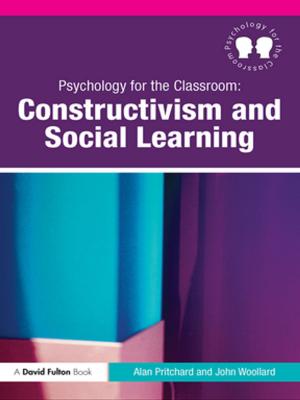Preference Data for Environmental Valuation
Combining Revealed and Stated Approaches
Nonfiction, Social & Cultural Studies, Political Science, Government, Public Policy, Business & Finance, Economics| Author: | ISBN: | 9781136812217 | |
| Publisher: | Taylor and Francis | Publication: | March 15, 2012 |
| Imprint: | Routledge | Language: | English |
| Author: | |
| ISBN: | 9781136812217 |
| Publisher: | Taylor and Francis |
| Publication: | March 15, 2012 |
| Imprint: | Routledge |
| Language: | English |
The monetary valuation of environmental goods and services has evolved from a fringe field of study in the late 1970s and early 1980s to a primary focus of environmental economists over the past decade. Despite its rapid growth, practitioners of valuation techniques often find themselves defending their practices to both users of the results of applied studies and, perhaps more troubling, to other practitioners.
One of the more heated threads of this internal debate over valuation techniques revolves around the types of data to use in performing a valuation study. In the infant years of the development of valuation techniques, two schools of thought emerged: the revealed preference school and the stated preference school, the latter of which is perhaps most associated with the contingent valuation method. In the midst of this debate an exciting new approach to non-market valuation was developed in the 1990s: a combination and joint estimation of revealed preference and stated preference data.
There are two primary objectives for this book. One objective is to fill a gap in the nonmarket valuation "primer" literature. A number of books have appeared over the past decade that develop the theory and methods of nonmarket valuation but each takes an individual nonmarket valuation method approach. This book considers each of these valuation methods in combination with another method. These relationships can be exploited econometrically to obtain more valid and reliable estimates of willingness-to-pay relative to the individual methods. The second objective is to showcase recent and novel applications of data combination and joint estimation via a set of original, state-of-the-art studies that are contributed by leading researchers in the field. This book will be accessible to economists and consultants working in business or government, as well as an invaluable resource for researchers and students alike.
The monetary valuation of environmental goods and services has evolved from a fringe field of study in the late 1970s and early 1980s to a primary focus of environmental economists over the past decade. Despite its rapid growth, practitioners of valuation techniques often find themselves defending their practices to both users of the results of applied studies and, perhaps more troubling, to other practitioners.
One of the more heated threads of this internal debate over valuation techniques revolves around the types of data to use in performing a valuation study. In the infant years of the development of valuation techniques, two schools of thought emerged: the revealed preference school and the stated preference school, the latter of which is perhaps most associated with the contingent valuation method. In the midst of this debate an exciting new approach to non-market valuation was developed in the 1990s: a combination and joint estimation of revealed preference and stated preference data.
There are two primary objectives for this book. One objective is to fill a gap in the nonmarket valuation "primer" literature. A number of books have appeared over the past decade that develop the theory and methods of nonmarket valuation but each takes an individual nonmarket valuation method approach. This book considers each of these valuation methods in combination with another method. These relationships can be exploited econometrically to obtain more valid and reliable estimates of willingness-to-pay relative to the individual methods. The second objective is to showcase recent and novel applications of data combination and joint estimation via a set of original, state-of-the-art studies that are contributed by leading researchers in the field. This book will be accessible to economists and consultants working in business or government, as well as an invaluable resource for researchers and students alike.















